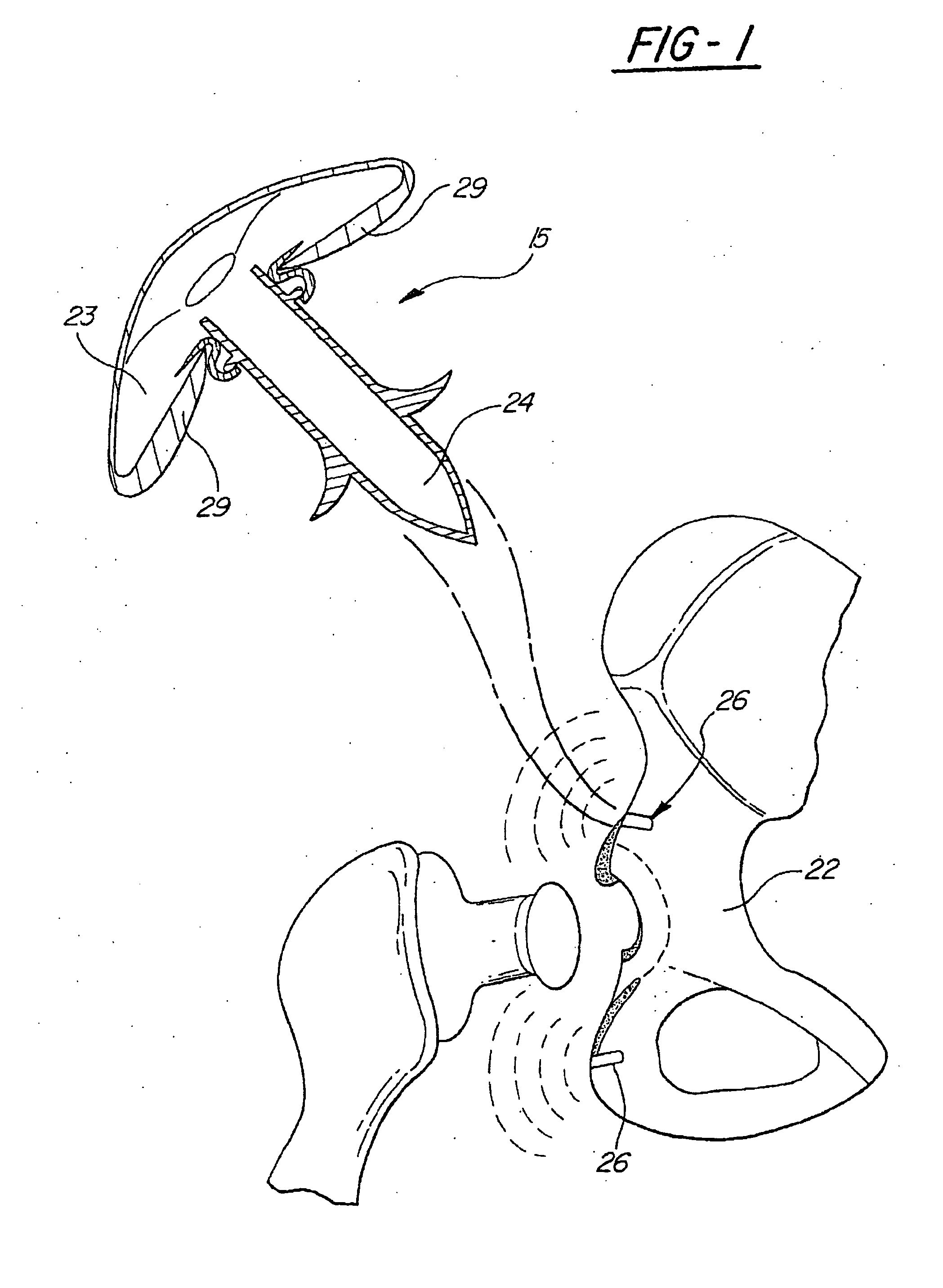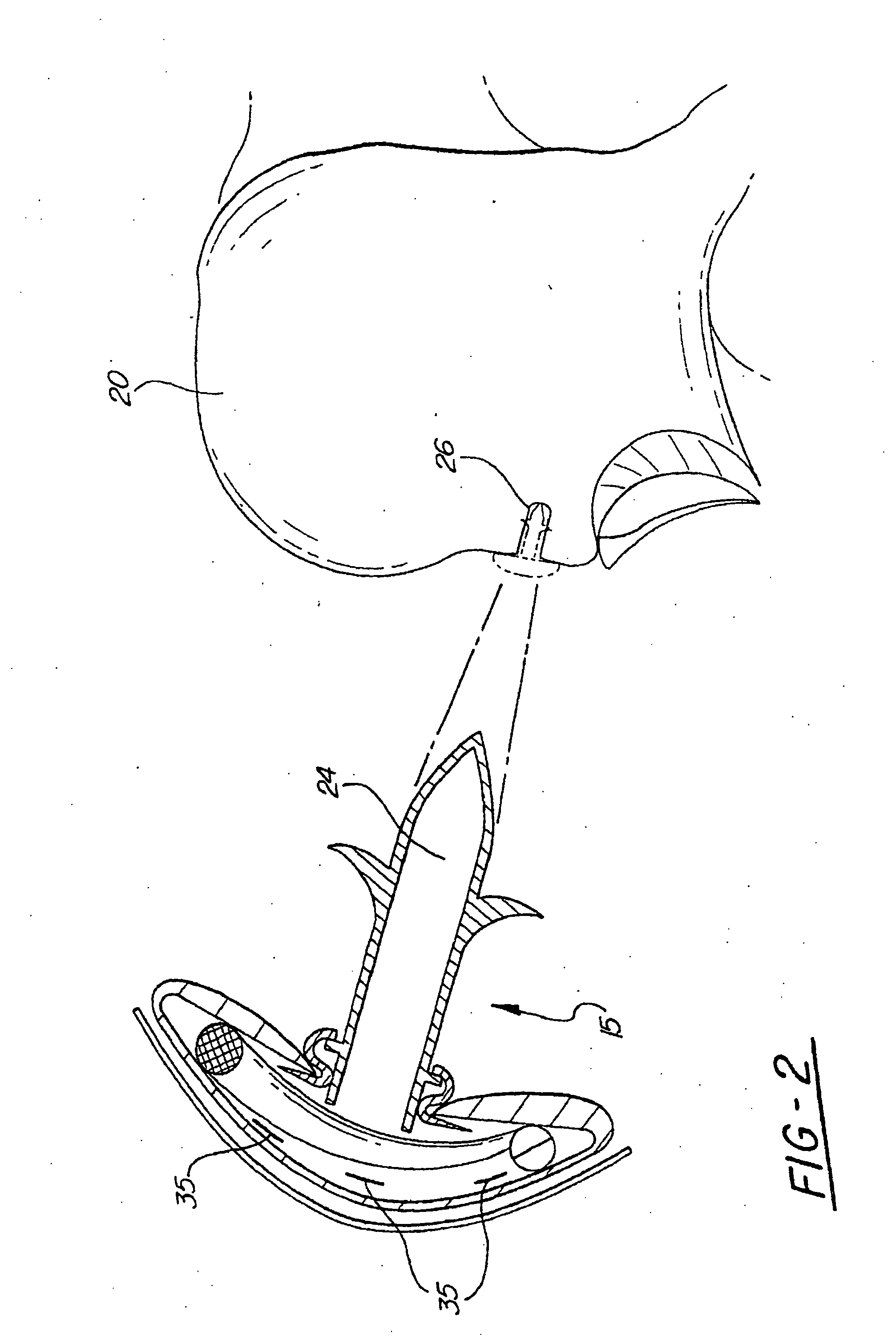Directional-ionizing energy emitting implant
a technology of ionizing energy and implant, which is applied in the field of implanted apparatus, can solve the problems of increasing the likelihood of repeating procedures after a period of time, limiting treatment options, and excessive migration, migration or differentiation of local primitive mesenchymal cells, so as to improve radiation efficacy, improve radiation efficacy, and inhibit growth, migration or differentiation.
- Summary
- Abstract
- Description
- Claims
- Application Information
AI Technical Summary
Benefits of technology
Problems solved by technology
Method used
Image
Examples
Embodiment Construction
[0029] The implant of the present invention is useful in applications involving the replacement or addition of bone tissue. The radiation delivery system induces the emission of specific radio nuclides enabling the anatomic configuration of the implant, the controlled placement position of one or more radio nuclides, and the selection of the type or composition of the radio source material to deliver a confined and targeted tissue deposition of ionizing radiation to a pre-calibrated dose rate, depth dose, and total delivered dose of prescribed radiation.
[0030] Referring now to the drawings, FIG. 1 is an assembly view of a first preferred embodiment of a implant or insert member [15] of the present invention, the insert member [15] being a spike or insert member [15] for placement into a hip joint [22], the view of the spike or insert member [15] being enlarged relative to the hip joint [22], the hip joint [22] including a bone fixation port [26] for receiving and securing the spike...
PUM
 Login to View More
Login to View More Abstract
Description
Claims
Application Information
 Login to View More
Login to View More - R&D
- Intellectual Property
- Life Sciences
- Materials
- Tech Scout
- Unparalleled Data Quality
- Higher Quality Content
- 60% Fewer Hallucinations
Browse by: Latest US Patents, China's latest patents, Technical Efficacy Thesaurus, Application Domain, Technology Topic, Popular Technical Reports.
© 2025 PatSnap. All rights reserved.Legal|Privacy policy|Modern Slavery Act Transparency Statement|Sitemap|About US| Contact US: help@patsnap.com



